Publisher: Amy Marson Creative Director: Gailen Runge Acquisitions Editor: Roxane Cerda Managing Editor: Liz Aneloski Editor: Christine Doyle Technical Editor: Helen Frost Cover/Book Designer: April Mostek Production Coordinator: Tim Manibusan Production Editor: Alice Mace Nakanishi Illustrator: Freesia Pearson Blizard Photo Assistants: Rachel Holmes and Mai Yong Vang Photography by Mai Yong Vang and Kelly Burgoyne of C&T Publishing, Inc., unless otherwise noted Published by C&T Publishing, Inc., P.O. Box 1456, Lafayette, CA 94549 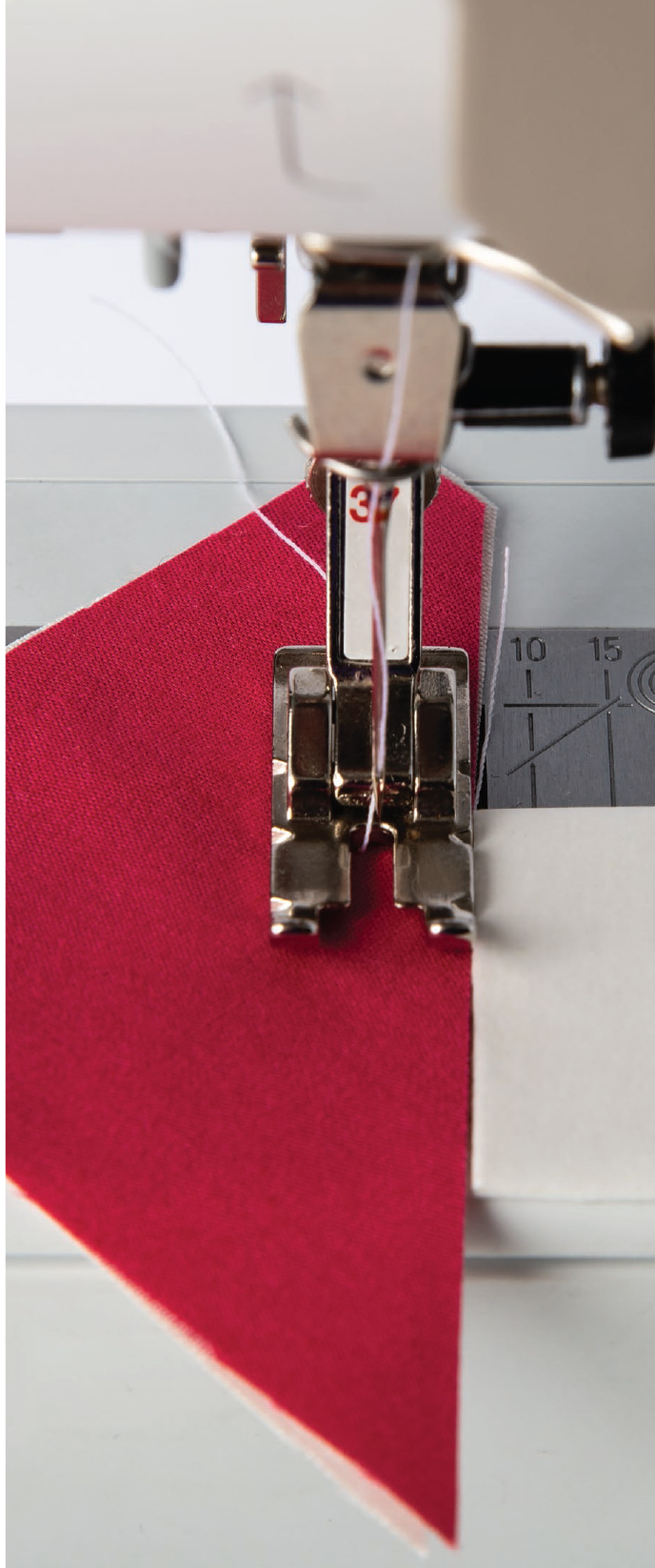 DEDICATION In loving memory of Patsy Eckman, who told me I needed to write a book showing her what to do with all those strips she had collected. To my family and special friends. Thank you for the love and support and never-ending laughter.
DEDICATION In loving memory of Patsy Eckman, who told me I needed to write a book showing her what to do with all those strips she had collected. To my family and special friends. Thank you for the love and support and never-ending laughter. 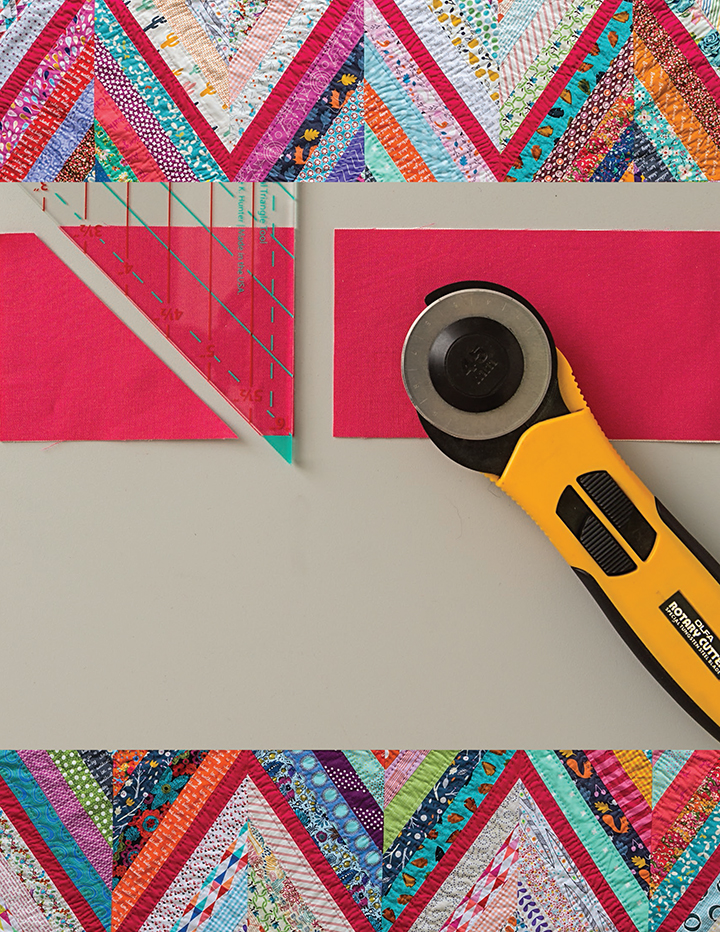 SPECIAL THANKS The Warm Company generously provided all the batting for these quilts. Cheryl Ashley-Serafine and Millie Rondon, thank you so much for your gorgeous machine quilting and your friendship.
SPECIAL THANKS The Warm Company generously provided all the batting for these quilts. Cheryl Ashley-Serafine and Millie Rondon, thank you so much for your gorgeous machine quilting and your friendship.
Christine Doyle, Liz Aneloski, and Helen Frost, thank you for your hard work and attention to detail.  What do I do with all these fabric strips? Its a common question I hear when teaching and visiting with quilters. Lets face it, we all collect fabric strips whether we want to or not. We have leftover pieces from finished projects, lengths of extra binding, remains from precuts, and the last bits of yardage that go unused. So what are we to do with them? Plenty of patterns and books on the market have super-simple strip-piecing quilts. This book takes a different approach.
What do I do with all these fabric strips? Its a common question I hear when teaching and visiting with quilters. Lets face it, we all collect fabric strips whether we want to or not. We have leftover pieces from finished projects, lengths of extra binding, remains from precuts, and the last bits of yardage that go unused. So what are we to do with them? Plenty of patterns and books on the market have super-simple strip-piecing quilts. This book takes a different approach.
Quilts can be made from strips without looking like they were just stitched together in a hurry. Ive got a few secrets I would like to share with you that will help turn your strips into fun and interesting quilts. If Im being completely honest, the term strip quilt makes me cringe a little. We live in an era of quick and easy and make it fast and get it done now. While those ideas and concepts may be helpful, even motivational or inspiring to some folks, thats really not how I want to make my quilts. Of course, I want to use the best techniques for accuracy and ease while Im quilting.
I also want to use all the tools available to achieve the best results, and I certainly dont want to make the process harder than it needs to be! However, I want to make quilts that sparkle, provide interest, and share the beauty of great design. I want to make quilts that are as comforting to look at as they are to use. That being said, I am a scrap quilter at heart. I love the idea of creating something wonderful out of the bits and pieces available. I dont want any fabric to go unused or unappreciated. The challenge then becomes how do I use all the fabric I have and still create quilts that are beautiful and meaningful? With these quilts, I hope to share the methods for getting the most effective use from your fabric, simple techniques that result in accurate piecing, tips for making every step more efficient, and stunning quilts that will be treasured forever but dont take years to finish.
I hope that this book inspires you to look at your fabric in a new way, consider some new ideas, and learn some new techniques. If these things happen, you are sure to enjoy this book as much as I have enjoyed writing it and creating the quilts. Enjoy every stitch, 

 GETTING STARTED With the advent of the rotary cutter and ruler system, cutting strips accurately and quickly became possible and making quilts from those strips was inevitable. You need to know some things before getting started, and if you read through these methods and tips, youll find that what to avoid is just as important as what to remember. Whether you are starting with yardage cut from the bolt, fat quarters, scraps, or salvaged fabric from old shirts or other sources, modern methods and accurate techniques will make both the process enjoyable and the results fabulous. THE FABRIC Whether you collect fabric from yard sales, salvage fabric from old clothes, shop online, or visit your local quilt shop, lets discuss the fabric.
GETTING STARTED With the advent of the rotary cutter and ruler system, cutting strips accurately and quickly became possible and making quilts from those strips was inevitable. You need to know some things before getting started, and if you read through these methods and tips, youll find that what to avoid is just as important as what to remember. Whether you are starting with yardage cut from the bolt, fat quarters, scraps, or salvaged fabric from old shirts or other sources, modern methods and accurate techniques will make both the process enjoyable and the results fabulous. THE FABRIC Whether you collect fabric from yard sales, salvage fabric from old clothes, shop online, or visit your local quilt shop, lets discuss the fabric.
Old Fabrics Using and reusing fabrics from clothing or other projects is a great way to recycle! However, keep a few tips in mind to make the process of incorporating these fabrics into your stash much easier. Always wash items that you plan to use! Even if its just been in storage for years, if the fabric is going to disintegrate during its first washing, you want to know that before you spend the time sewing it into your quilt. Not all dyes and fabrics are created equalsome will not withstand the test of timeand knowing that before you put them into your quilt is vital. So wash and dry them as you plan to do with the finished quilt. Once the fabrics (or clothes or other items) are washed and dried, press them. Some items have mystery ingre-dients that may not be labeled.
If polyester or nylon threads are present, find out now by pressing. These fabrics will melt under the cotton setting on the iron. Again, its better to find out now rather than later. Using other fiber content in a quilt is okay, its just important to know ahead of time.  Protect Your IronUse a thin muslin pressing cloth to protect the iron if you suspect questionable content in a fabric.
Protect Your IronUse a thin muslin pressing cloth to protect the iron if you suspect questionable content in a fabric. New Fabrics As for new fabrics, I never wash them. Shopping at local quilt stores will ensure quality fabrics that should wash without bleeding of colors.
New Fabrics As for new fabrics, I never wash them. Shopping at local quilt stores will ensure quality fabrics that should wash without bleeding of colors.
Most importantly, using new, unwashed fabrics will create the crinkled look of a vintage quilt once it is freshly washed and warm from the dryer. Also, using new fabrics that are unwashed makes them easier to handle, sew, cut, and press. The sizing included in the manufacturing helps keep them from fraying. Combining washed fabrics with new fabrics will work. Use a pressing spray for washed fabrics to give them the same body as the unwashed fabrics for easier handling.  Catching ColorsIf you do have a color that runs on a quilt, safety pin a color catching laundry sheet to the affected spot and rewash. Buying Fabric Most of the time I buy fat quarters.
Catching ColorsIf you do have a color that runs on a quilt, safety pin a color catching laundry sheet to the affected spot and rewash. Buying Fabric Most of the time I buy fat quarters.
If I like the color or pattern and simply want it, a fat quarter will do! Fat quarter bundles are even better! If it looks like a good border or feature fabric (a great color combination or large print) I buy 2 yards. Ive never met a border that needed to be longer than that. If its a bargain I cant pass up, I get 5 yards for a backing. I may not save it all for a backing, but at least I will have enough if I choose to use it that way. I also love pieced backings, so I never hesitate to add a strip of something to an otherwise plain backing. Fabric Organization and Storage Almost every time I teach I get asked the age-old question, How do you organize your stash? While I dont claim to have the best system in the world for storage and organization, I do have a system that works well for me.
Next page
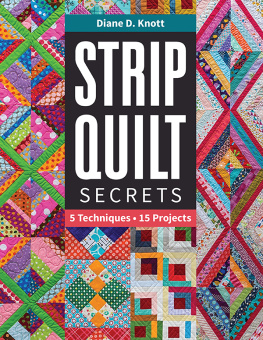
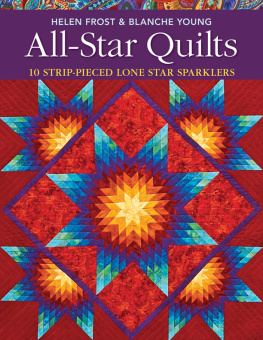
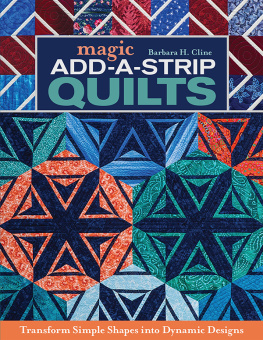

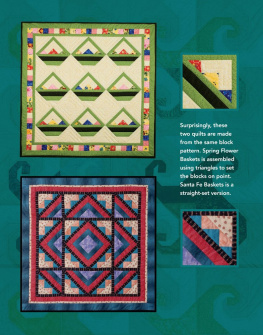
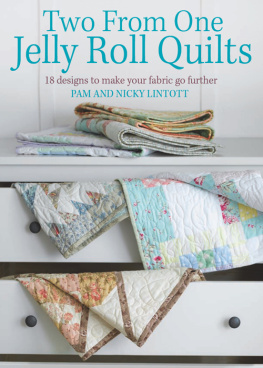
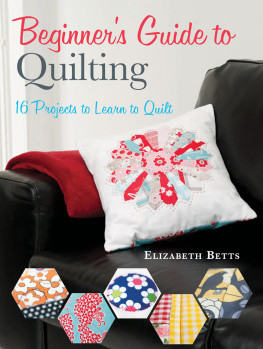
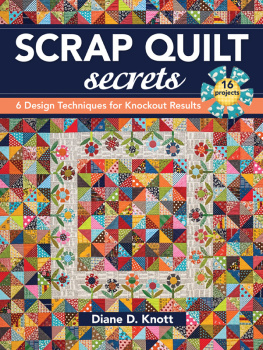

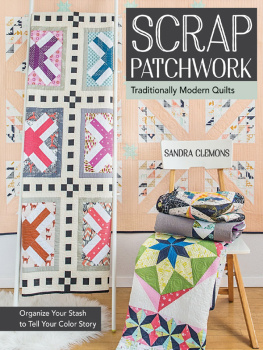
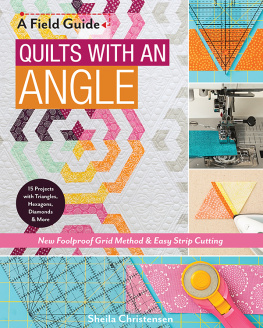
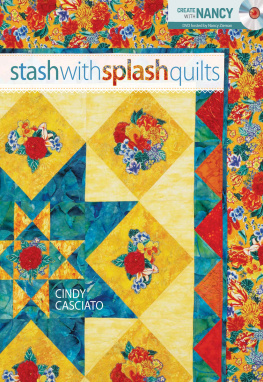
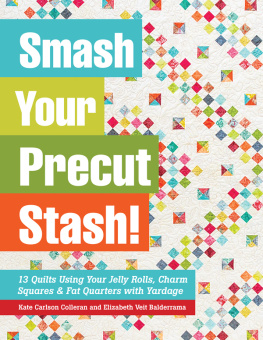
 DEDICATION In loving memory of Patsy Eckman, who told me I needed to write a book showing her what to do with all those strips she had collected. To my family and special friends. Thank you for the love and support and never-ending laughter.
DEDICATION In loving memory of Patsy Eckman, who told me I needed to write a book showing her what to do with all those strips she had collected. To my family and special friends. Thank you for the love and support and never-ending laughter.  SPECIAL THANKS The Warm Company generously provided all the batting for these quilts. Cheryl Ashley-Serafine and Millie Rondon, thank you so much for your gorgeous machine quilting and your friendship.
SPECIAL THANKS The Warm Company generously provided all the batting for these quilts. Cheryl Ashley-Serafine and Millie Rondon, thank you so much for your gorgeous machine quilting and your friendship. What do I do with all these fabric strips? Its a common question I hear when teaching and visiting with quilters. Lets face it, we all collect fabric strips whether we want to or not. We have leftover pieces from finished projects, lengths of extra binding, remains from precuts, and the last bits of yardage that go unused. So what are we to do with them? Plenty of patterns and books on the market have super-simple strip-piecing quilts. This book takes a different approach.
What do I do with all these fabric strips? Its a common question I hear when teaching and visiting with quilters. Lets face it, we all collect fabric strips whether we want to or not. We have leftover pieces from finished projects, lengths of extra binding, remains from precuts, and the last bits of yardage that go unused. So what are we to do with them? Plenty of patterns and books on the market have super-simple strip-piecing quilts. This book takes a different approach.

 GETTING STARTED With the advent of the rotary cutter and ruler system, cutting strips accurately and quickly became possible and making quilts from those strips was inevitable. You need to know some things before getting started, and if you read through these methods and tips, youll find that what to avoid is just as important as what to remember. Whether you are starting with yardage cut from the bolt, fat quarters, scraps, or salvaged fabric from old shirts or other sources, modern methods and accurate techniques will make both the process enjoyable and the results fabulous. THE FABRIC Whether you collect fabric from yard sales, salvage fabric from old clothes, shop online, or visit your local quilt shop, lets discuss the fabric.
GETTING STARTED With the advent of the rotary cutter and ruler system, cutting strips accurately and quickly became possible and making quilts from those strips was inevitable. You need to know some things before getting started, and if you read through these methods and tips, youll find that what to avoid is just as important as what to remember. Whether you are starting with yardage cut from the bolt, fat quarters, scraps, or salvaged fabric from old shirts or other sources, modern methods and accurate techniques will make both the process enjoyable and the results fabulous. THE FABRIC Whether you collect fabric from yard sales, salvage fabric from old clothes, shop online, or visit your local quilt shop, lets discuss the fabric. Protect Your IronUse a thin muslin pressing cloth to protect the iron if you suspect questionable content in a fabric.
Protect Your IronUse a thin muslin pressing cloth to protect the iron if you suspect questionable content in a fabric. New Fabrics As for new fabrics, I never wash them. Shopping at local quilt stores will ensure quality fabrics that should wash without bleeding of colors.
New Fabrics As for new fabrics, I never wash them. Shopping at local quilt stores will ensure quality fabrics that should wash without bleeding of colors.